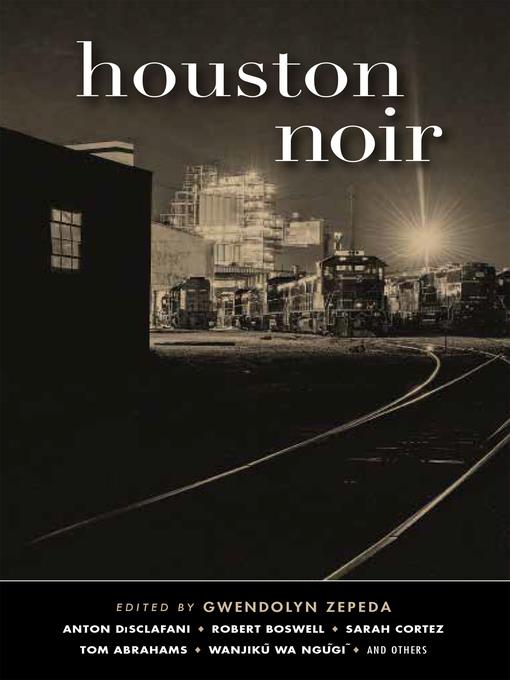
Houston Noir
Akashic Noir
کتاب های مرتبط
- اطلاعات
- نقد و بررسی
- دیدگاه کاربران
نقد و بررسی

February 15, 2019
Editor Zepeda departs from her usual diet of brightly bilingual children's books (Maya and Annie on Saturdays and Sundays/Los Sábados y Domingos de Maya y Annie, 2018, etc.) to present 14 reasons to avoid visiting Houston, or to be sorry that you live there.Zepeda's not kidding when she says the newly commissioned stories "hurt me. They burned." There's precious little comfort to be found in any of these Houston neighborhoods, most of which are set light-years away from the city's notoriously cushy new-money culture. No less than four stories--Tom Abrahams's "Tolerance," Pia Pico's "The Falls of Westpark," Sehba Sarwar's "Railway Track," and Icess Fernandez Rojas' "Happy Hunting," whose combination of creeps and surprises makes it the volume's low-life high point--feature serial killings of young women. The naïve young hero of Deborah D.E.E.P. Mouton's "Where the Ends Meet" and the almost equally naïve cop hero of Leslie Contreras Schwartz's "City of Girls" find that the girls in question have merely been sexually enslaved, not murdered, and Robert Boswell's alarmingly kicky "The Use of Landscape" dials back the violence by focusing it on only a single woman. The traffic in drugs creates intimate tragedies in Wanjiku Wa Ngugi's "Miles's Blues" and Stephanie Jaye Evans' "Jamie's Mother." Even when professional criminals aren't involved, the squalor associated with them infects the one-off murders of Larry Watts' "A Dark Universe" and Adrienne Perry's "One in the Family" and the domestic dramas of Sarah Cortez's prose poem, "Photo Album," and Anton DiSclafani's "Tangled." So it's something of a relief to turn to Reyes Ramirez's "Xitlali Zaragoza, Curandera," which involves nothing more sinister than the curse professionally unmasked and lifted by a dedicated investigator of hauntings.Houston comes across as a haven of multiculturalism--though, as in all the 90-plus volumes of Akashic's 15-year-old series, the vision of the city that emerges isn't likely to jump-start tourism for any but the most ghoulishly inclined.
COPYRIGHT(2019) Kirkus Reviews, ALL RIGHTS RESERVED.

March 25, 2019
Although some of the 14 short stories in this solid Akashic noir anthology are not city specific, most make the Houston setting central to their narratives. Zepeda’s introduction notes her hometown’s unique features, including the absence of any zoning laws, making Houston “culturally diverse, internally incongruous, and ever-changing.” Its status as a port city and an economy buoyed by conventions and sporting events have combined to make Houston a human trafficking hub, which comes into play in the volume’s most chilling entry, Deborah D.E.E.P. Mouton’s “Where the Ends Meet.” That tale centers on the moral slippage of an unemployed deliveryman desperate to earn a living, who finds casting aside any vestiges of conscience all too easy. The transformation of an average, decent person into something else is also at the heart of Adrienne Perry’s “One in the Family,” another highlight. However, some tales, such as Anton DiSclafani’s memorable “Tangled,” in which a devoted mother seeks justice for her daughter who’s a victim of spousal abuse, could have taken place in any city. Noir aficionados will be pleased.

























دیدگاه کاربران